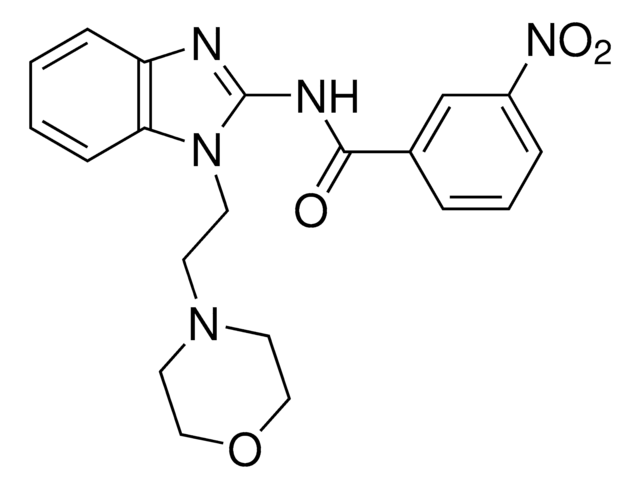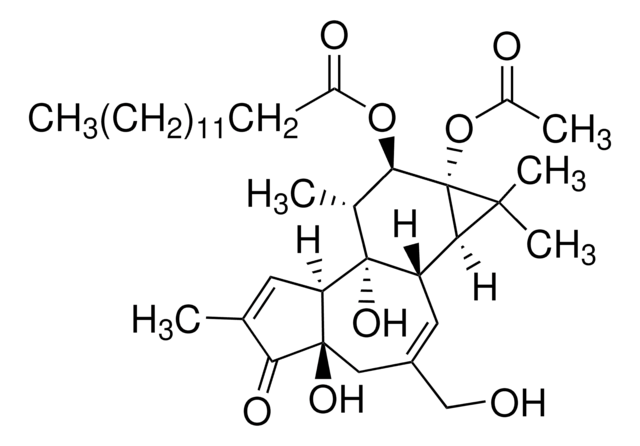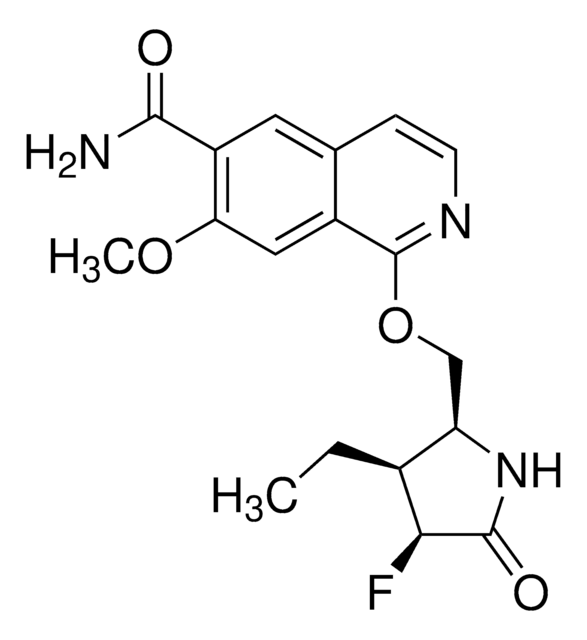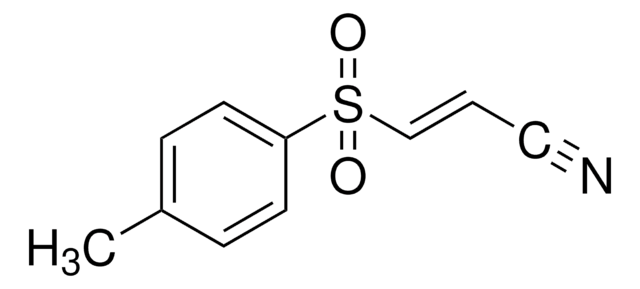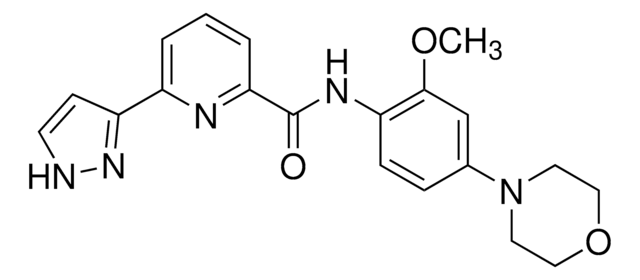SML2371
FC-99 hydrochloride
≥98% (HPLC)
Synonym(s):
FC 99 hydrochloride, FC99 hydrochloride, N1-[(4-Methoxyphenyl)methyl]-4-methyl-1,2-benzenediamine hydrochloride
Sign Into View Organizational & Contract Pricing
All Photos(1)
About This Item
Empirical Formula (Hill Notation):
C15H18N2O · xHCl
CAS Number:
Molecular Weight:
242.32 (free base basis)
UNSPSC Code:
12352200
Recommended Products
assay
≥98% (HPLC)
form
powder
storage condition
desiccated
color
white to beige
solubility
H2O: 2 mg/mL, clear (warmed)
storage temp.
2-8°C
SMILES string
CC1=CC(N)=C(C=C1)NCC2=CC=C(C=C2)OC
Biochem/physiol Actions
FC-99 is a benzenediamine derivative that inhibits LPS-induced IRAK4 phosphorylation/activation and downstream signaling events (5-45 μM; murine RAW 264.7 & peritoneal macrophages), including IRAK1 (a TLR3 pathway negative regulator) degradation, p38/ERK/JNK activation, and cytokines production. FC-99 inhibits RSV replication (50 μM; A549) and poly(I:C)-indued IRF3/IFN-α/JAK/STAT1 signalling in cultures (0.5-50 μM; murine peritoneal macrophages), and ameliorates sepsis induction following caecal ligation puncture (CLP) in mice in vivo (100/70/32.5% motality in 7 days with 0/30/100 mg/kg i.p. 2 h prior to CLP).
FC-99 is known to affect the levels of serum immunoglobulin. It might be therapeutically beneficial in systemic lupus erythematosus.
wgk_germany
WGK 3
flash_point_f
Not applicable
flash_point_c
Not applicable
Certificates of Analysis (COA)
Search for Certificates of Analysis (COA) by entering the products Lot/Batch Number. Lot and Batch Numbers can be found on a product’s label following the words ‘Lot’ or ‘Batch’.
Already Own This Product?
Find documentation for the products that you have recently purchased in the Document Library.
A benzenediamine derivate FC-99 attenuates lupus nephritis in MRL/lpr mice via inhibiting myeloid dendritic cell-secreted BAFF
Ji J, et al.
Acta biochimica et biophysica Sinica, 48(5), 411-419 (2016)
Jianjian Ji et al.
Acta biochimica et biophysica Sinica, 46(10), 829-836 (2014-09-05)
Increased IL-17-producing helper T (Th17) cells have been observed in patients with rheumatoid arthritis (RA). The retinoic-acid-related orphan nuclear receptor (RORγt) is the master regulator of Th17 cells. Our previous research showed that FC99 possesses anti-inflammation activity. However, to date
Yarong Zhao et al.
Oncotarget, 9(19), 14959-14976 (2018-03-31)
The liver is a vital target for sepsis-related injury, leading to inflammatory pathogenesis, multiple organ dysfunction and high mortality rates. Monocyte-derived macrophage transformations are key events in hepatic inflammation. N1-[(4-methoxy)methyl]-4-methyl-1,2-benzenediamine (FC-99) previously displayed therapeutic potential on experimental sepsis. However, the
Jianjian Ji et al.
Acta biochimica et biophysica Sinica, 48(5), 411-419 (2016-04-29)
Myeloid dendritic cells (DCs) can produce B-cell-activating factor (BAFF) that modulates survival and differentiation of B cells and plays a pivotal role in the pathogenesis of systemic lupus erythematosus (SLE). Toll-like receptor 4 (TLR4) signaling has important functions in the
Huan Dou et al.
American journal of respiratory cell and molecular biology, 51(2), 191-200 (2014-03-05)
We designed and synthesized a novel benzenediamine derivate, FC-99, that was tested for its ability to protect mice from experimental sepsis. Moreover, we sought to determine whether FC-99 could control a bacterial infection and to clarify the mechanism by which
Our team of scientists has experience in all areas of research including Life Science, Material Science, Chemical Synthesis, Chromatography, Analytical and many others.
Contact Technical Service